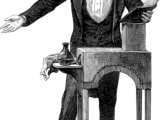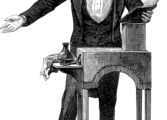Homer Simpson: Portraying the Quintessential American Dad

Introduction:
Homer Simpson, the fictional character from the long-running animated television series “The Simpsons,” has captured the hearts and minds of millions worldwide. Created by Matt Groening, this lovable and iconic character serves as the epitome of the average American dad, offering a humorous and satirical take on family life, societal norms, and the everyday struggles of the working class. In this article, we delve into the essence of Homer Simpson, exploring his development, cultural significance, and enduring popularity among art enthusiasts and collectors.
Homer Simpson – The Everyman:

Homer Simpson, voiced by Dan Castellaneta, represents the embodiment of the “everyman.” With his rotund physique, bald head, and slovenly appearance, Homer’s physical attributes mirror the ordinary middle-aged American male. However, beneath his seemingly simple-minded exterior lies a complex character full of contradictions, hopes, and desires.
A Brief History of Homer Simpson:
Homer Simpson made his debut on television screens on December 17, 1989, in the half-hour series premiere of “The Simpsons,” aptly titled “Simpsons Roasting on an Open Fire.” Initially, the show focused on the dysfunctional but loveable Simpson family, revolving around Homer, his wife Marge, and their children Bart, Lisa, and Maggie. Over the years, the series evolved, allowing Homer’s character to mature and develop, resonating with fans of all ages.
Evolution of Homer Simpson:
From his early appearances, Homer has transformed from a simple-minded and impulsive father figure to a three-dimensional character with nuanced emotions and relatable flaws. The writers and animators aptly depicted his growth over the series, delving into his work-life balance, struggles with alcoholism, and enduring love for his family. Homer’s iconic catchphrases, such as “D’oh!” and “Mmm…donuts,” have become ingrained in popular culture, with fans eagerly awaiting each episode for new humorous antics.
Cultural Significance:
“The Simpsons” is widely regarded as one of the most influential animated television shows of all time. The show’s satire and social commentary have provided a lens into American society for over three decades. Homer Simpson, as the show’s central character, embodies the average American’s joys, frustrations, and idiosyncrasies. Whether it is his love for fast food, his working-class struggles, or his often-questionable decision-making, Homer serves as a humorous reflection of the American psyche.
Artistic Appeal:
Beyond its role as a popular television show, “The Simpsons” has garnered attention from art enthusiasts and collectors around the world. The unique animation style, vibrant color palette, and imaginative storytelling have transformed the show into a recognized art form. Homer Simpson, as the show’s main character, is often depicted in various artistic mediums, including paintings, sculptures, and photographs. More than a mere cartoon character, he has become a cultural icon, representing American pop art.
Homer Simpson in Pop Culture:
Throughout its long-standing tenure, “The Simpsons” has consistently maintained its position as a cultural phenomenon. Homer Simpson has transcended the small screen, infiltrating popular culture through merchandise, advertising campaigns, and even political discourse. His image has appeared on countless products, from t-shirts and mugs to collectible figurines, making him a recognizable symbol in the world of pop art. Homer Simpson’s visibility and influence continue to grow, solidifying his place in art history.
In conclusion, Homer Simpson, the lovably flawed everyman, has left an indelible mark on both television history and the art world. From his early days as a simple cartoon character to his current status as a cultural icon, Homer has evolved and grown, captivating audiences worldwide. The enduring appeal of “The Simpsons” and Homer’s relatable quirks and actions have transformed the show into a cultural touchstone for art enthusiasts and collectors alike. Whether through his catchphrases, his endearing personality, or his satirical portrayal of American family life, Homer Simpson will forever be a cherished figure in both art and popular culture.
Sources:
– “The Simpsons” – Official Website
– “The Simpsons: A Complete Guide to Our Favorite Family” – Matt Groening
– “The Simpsons: An Uncensored, Unauthorized History” – John Ortved
– “Homer Simpson Goes to Washington: American Politics through Popular Culture” – Joseph Faina
















































